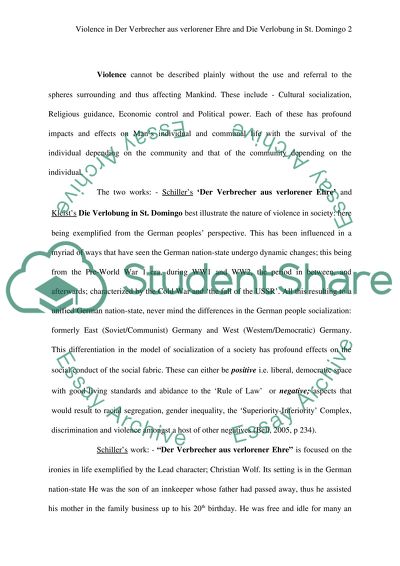Cite this document
(“Violence in Der Verbrecher aus verlorener Ehre and Die Verlobung in Essay”, n.d.)
Retrieved from https://studentshare.org/literature/1393809-violence-in-der-verbrecher-aus-verlorener-ehre-and-die-verlobung-in-st-domingo
Retrieved from https://studentshare.org/literature/1393809-violence-in-der-verbrecher-aus-verlorener-ehre-and-die-verlobung-in-st-domingo
(Violence in Der Verbrecher Aus Verlorener Ehre and Die Verlobung in Essay)
https://studentshare.org/literature/1393809-violence-in-der-verbrecher-aus-verlorener-ehre-and-die-verlobung-in-st-domingo.
https://studentshare.org/literature/1393809-violence-in-der-verbrecher-aus-verlorener-ehre-and-die-verlobung-in-st-domingo.
“Violence in Der Verbrecher Aus Verlorener Ehre and Die Verlobung in Essay”, n.d. https://studentshare.org/literature/1393809-violence-in-der-verbrecher-aus-verlorener-ehre-and-die-verlobung-in-st-domingo.


